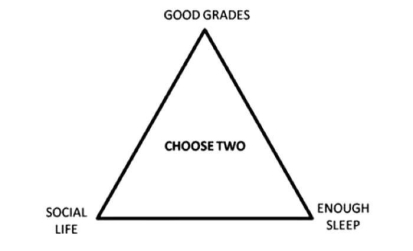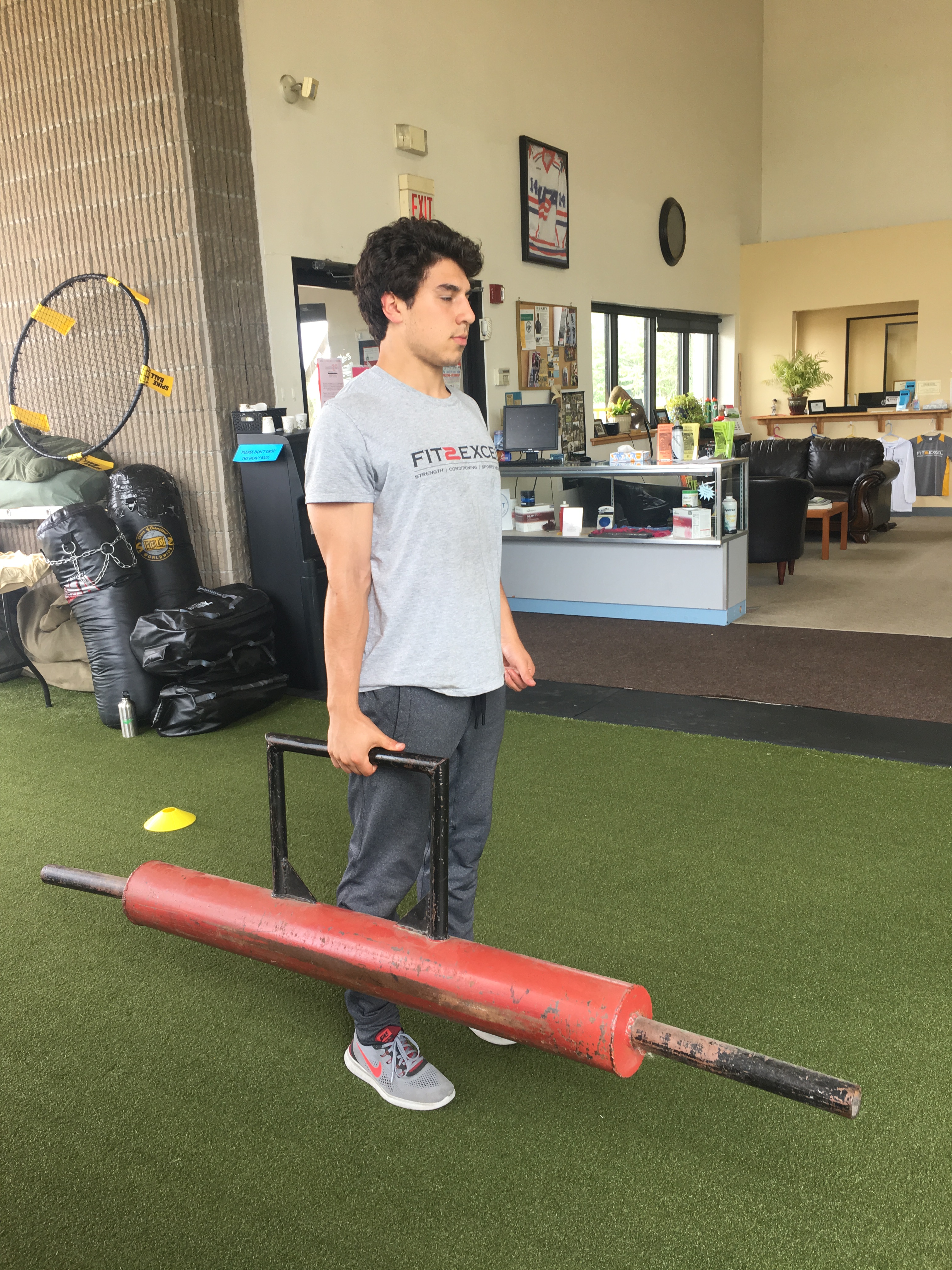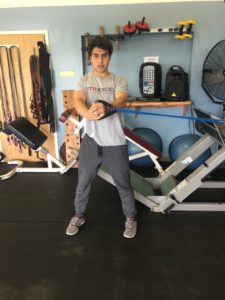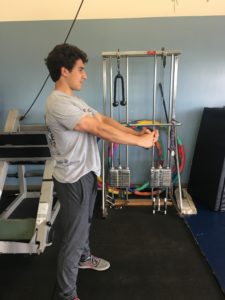Originally posted on davidrosalesfitness.com on August 24, 2018
Dear young athlete,
When opening up a fortune cookie today, I read the little piece of paper that said, “A mentor is someone whose hindsight can become your foresight.” In so many ways, more experience, more opportunities to succeed, fail, and learn provides insights that only come with time. Reflecting on my athletic career to date, here are some good decisions I’ve made, and things that I would change if put back into the shoes of a child. However, I would not go back in time and change any of this in my own life. For, that would change who I am today. But, take my experience and think about it. Consider what you would change, and what you need to keep doing.
Good decision #1: Always playing on the best team I could
For you and your family, what team to play for can be a tough decision. When I look back on my hockey career, I always wanted to be on the best team I could. Years where I jumped to a higher level were my best years of growth. In particular, my sophomore year of high school stands out when I made a big jump from high school to junior hockey. Starting before my 16th birthday, I was one of the youngest kids in the entire league. Most kids were 17 and 18, if not older. The pace of play was faster, more physical. In similar circumstances, there are two scenarios that can play out. The athlete either struggles immensely, and doesn’t get much playing time, or they rise to the level, and experience an unmatched period of growth. For me, it was the latter, and I have a few theories why. I Consider these prerequisites, boxes that need to be checked before making a big jump.
- A coach who will keep playing you despite mistakes.
You need to be in a place where a costly mistake won’t leave you on the bench for next two weeks. You need to be playing for someone who recognizes that it will take time to adjust to the level, and that the only way for this adjustment to happen is to allow the mistakes to occur, and allow the athlete to learn from them. In turn, you can’t be afraid to make these mistakes.
- The right attitude
You will not be the superstar. All eyes will not be on you. This may be the first time in your life where this is not the case. You have to be okay with working your butt off in silence. If you can develop this mindset, it will work out. If you can’t, you’ll be frustrated the whole season.
If you can find a great coach, and have the right attitude, you can be successful playing at the best level you can. Even just trying out for those teams will be immense learning experiences.
Bad decision #1: Not taking off time from hockey to try other sports
If you have one sport that you really love, that’s great. But, especially if you’re still in middle school, you need to be playing other sports. The research is clear that early sport specialization leads to increased injury risk and burnout. I love hockey. When I was younger all I wanted to do was be on the ice. Every opportunity, I was out playing tournaments or pick-up and I loved every second of it. Even during baseball season, I played four or five tournaments each spring. When I was 15, I pulled my hip flexor. An injury I now know was the result of a muscle imbalance from skating too much without balancing it out. When I was 18 felt burnt out. After my third consecutive 45+ game season, I needed a long break. At an age where developmentally I should’ve been skating regularly 10 months out of year, I needed almost 6 months off to mentally refresh. It’s impossible to say for certain, but I think if I had taken more time in my youth to try a new sport, like soccer or lacrosse or golf or anything, I would’ve physically been more balanced, and mentally more eager to keep playing hockey. Whatever your favorite sport is, that sport you feel you can’t live a day without, you should take at least a few months off from it a year. If that’s soccer, pick a season to not play organized soccer. If that’s hockey, stay off the ice in the summer. Go fishing, or golfing, or swimming. In the long-term, it will make you a more balanced athlete. But more importantly in my opinion, is you’ll keep your love for the game. When you’re 17, 18 and maybe getting looked at by college coaches, it won’t feel like as much of a grind. At the start of each organized season, you’ll be more excited to get going. Maybe, you’ll find that you love a new sport just as much as the others. Try out whatever interests you, and feel free to take as much time off as you need from any sport. Don’t worry about falling behind, if you truly love it, you’ll keep gravitating toward it later on.
Good decision #2: Starting a strength and conditioning program young
When I was going into sixth grade, my mom signed me up for the Fit 2 Excel summer athletic performance class at MMU. I honestly think I went two or three times the entire summer. For whatever reason I couldn’t motivate myself to get up early. Then, that year, an upperclassman and great friend showed me a little bit around the weight room. From then on, I was motivated to improve. The next summer, and for about the next five years, I was religious with my strength training at Fit 2 Excel. There were summers where I don’t think I missed one class at MMU. Year round I was in the facility doing every youth session. I loved getting stronger, more athletic. I could see the results on the ice. My legs were no longer sore after skating, and I felt harder to knock over. I think it’s a huge reason why I’m still able to compete at a relatively high level. Without being strong, I wouldn’t have any chance playing at the pace as guys mostly all bigger than me. So, if you’re strength training right now, good. Keep it up. Ideally, if you can get in the gym twice per week for most of the year, you’re doing well. It may not pay off for years, but you’re developing and ingraining sound movement mechanics that are laying a foundation to developing elite sports skills and athleticism, as well as learning how to keep your muscles balanced and prevent injury. If you’re not strength training, the best time to start is today. If you’re eleven or older, you’re ready. Find a trainer, learn the basics, and get started. As a trainer, I’m obviously biased but to start out you need the eyes of a trainer looking at you. Whatever squat technique you learn at age 11, that’s the movement pattern that will begin to ingrain, so it better be mechanically sound.
Bad decision #2:
Not taking stretching and mobility seriously
You’re probably sick of coaches, parents, and trainers telling you to stretch more. I get it. You feel fantastic, why would you need to stretch? If you’re 15 or 16, I’m sure you’re beginning to feel a difference in the stiffness of your muscles. But even if you’re younger, starting to get in the habit now will only help down the line. I could talk about why you need to, but that I will save for another letter. For now, just trust me, when you’re older you’ll wish you’d done more. Here are some very simple ways to start making stretching and mobility a habit.
- Foam roll before or after working out, or before bed.
Foam rolling hurts at first, but after a little while feels like a really nice massage on your muscles. Spend extra time on your quads, hip flexors, and calves. It’s as simple as a few minutes a day. Show up to the gym 5 minutes early and grab a roller. Make it the last thing you do before bed. It doesn’t matter when, just find a time to do it consistently.
- Go to a yoga class
I get that it can be hard to motivate yourself to do stuff on your own. Find a yoga studio, even if you only go a few times a month. Beyond just stretching, yoga also helps with balance, and can even be a good core workout. It also helps you learn about your body, and make you more aware of your movement. Yoga can also be a great form of meditation, which is something we’ll talk about when you’re a little older. Most importantly, yoga classes are almost always entirely females, which is more fun than doing yoga alone in your room.
3.) Check out resources like Becoming a Supple Leopard or The Happy Body. They both offer mobility and stretching “programs.” If you’re learning how to stretch, begin with The Happy Body. Becoming a Supple Leopard is more advanced and a much denser read. If you’re self-disciplined and love reading, both are great options.
4.) Lunge
If nothing else, spend some time each day in a lunge position stretching out your hip flexors. Whenever you’re watching TV or on your phone just get off that chair and take a few seconds to get those hip flexors loosened up.
Good decision #3: Staying in Vermont and playing for the Lumberjacks
At some point, you won’t feel content with where you’re at. You’ll feel frustrated, like you’re tired of the grind, or feeling like you could be playing at a higher level. You’ll say to yourself, “If only I was on that team or playing at that level, then things would be better.” I will be starting my fifth year of junior hockey this season. I’ve seen it all in terms of kids coming and going from different teams for all different reasons. A common theme I’ve noticed is that kids who aren’t happy in one place, won’t be any happier in another place. Those kids will blame their performance or unhappiness based on every external circumstance imaginable. I challenge you, whenever you feel frustrated or longing for something different to first look inside at yourself. Are these problems I could solve by doing something different? How can I make a more positive impact on this environment? Is it possible that these issues are the result of my actions? The grass is not always greener. Accomplish everything you can where you are at, before you think about moving on to “bigger and better” things. I’ve been with this organization through winning and losing seasons, coaching changes, and everything in between. I’ve been able to first look internally at my personal struggles, instead of blaming external circumstances. Anywhere else I could have gone, would not have been as good a place for me. I’m incredibly grateful I’ve been able to play hockey at a high level and live at home, while nearly all of my hockey friends have had to move away at a young age. To graduate at MMU, and to now be able to work at Fit 2 Excel have all been blessings as a result of staying with it. Make the Big Time Where You’re At.
Closing thoughts:
Learn to work hard. If you’re motivated, this will be easy. You won’t need someone to tell you to wake up early, to eat healthy, to go to the gym, or to seek out extra skills work. Working hard is the easy part. The hard part comes when you realize that hard work isn’t enough. You need to work smart as well. You’ll need to learn to ask yourself tough questions, and answer them honestly. If you’re always thinking of how to become better not solely through effort, you’ll discover strategies that I’ve yet to discover. This could bring you to a level beyond what you thought possible. So get after it, and have fun along the way.
Sincerely,
David









